#eugène de beauharnais
Text

Portrait of Eugène de Beauharnais by François Gérard
#eugène de beauharnais#art#françois gérard#portrait#uniform#colonel#chasseurs à cheval#consular guard#france#french#paris#hôtel de beauharnais#napoleonic#history#europe#european
60 notes
·
View notes
Text
Laure about Bessières and Junot
In her memoirs, Laure for the time of her marriage (i.e., early Consulate) mentions Bessières as one of Junot's close friends:
Colonel Bessières, as he still only held that rank at the time, was at that time considered to be one of Junot's close friends.
However, with a caveat in a footnote:
Since then, this friendship cooled. I have always deplored the cause, which was as futile and ridiculous as possible, especially between two men such as Bessières and Junot, both young sprouts from the same tree and destined to live under its shade. I was the judge between the two of them, and I must say that I did not always rule in favour of Junot.
In the same chapter, Laure also mentions Bessières sharing his lodgings with Eugène and the two of them partying hard:
He was then colonel of the guides, i.e. the mounted chasseurs of the consular guard, together with Eugène Beauharnais. They were living in the same lodgings, and rumour had it that they were both very fond of all the joys that come with fortune and youth.
Does anybody happen to know what „futile and ridiculous“ thing caused the friendship between Bessières and Junot to break up? My first guess would have been a woman. But it might as well have been Bessières' catholicism?
#napoleon's marshals#jean baptiste bessières#napoleon's generals#jean andoche junot#napoleon's family#eugène de beauharnais#paris 1800#consulate
33 notes
·
View notes
Text
“The question of wheat is the most important and the most delicate for sovereigns. The owners never agree with the people. The first duty of the sovereign is to lean towards the people, without listening to the sophisms of the owners.”
— Napoleon Bonaparte in his letter to Eugène de Beauharnais, September 1810
French:
«La question des blés est la plus importante et la plus délicate pour les souverains. Les propriétaires ne sont jamais d’accord avec le peuple. Le premier devoir du souverain est de pencher pour le peuple, sans écouter les sophismes des propriétaires.»
Source: Europeana — Exhibition: Napoleon and urbanism in the 19th century
#Napoleon#napoleon bonaparte#Eugène de Beauharnais#napoleonic era#napoleonic#first french empire#french empire#19th century#quotes by Napoleon#Napoleon quotes#france#history#Europeana#1800s#letter#correspondence of Napoleon#Napoleon’s correspondence#Eugène#Napoleon’s family#1810#1810s#french history#Napoleon and urbanism in the 19th century
38 notes
·
View notes
Text
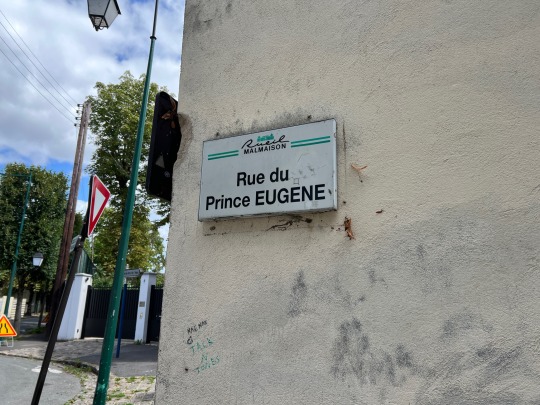



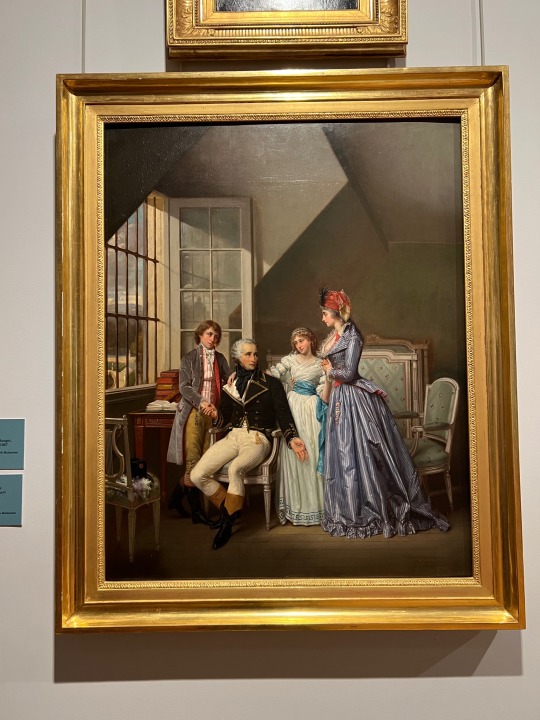



Last one for today—some Eugène de Beauharnais pics I’ve been accumulating for @josefavomjaaga. :) The bottom two are from Les Invalides; the rest are from Malmaison.
57 notes
·
View notes
Text

I'm sick today so here's just some dumb silly posts
#napoleonic#napoleonic era#napoleonic shitpost#napoleonic wars#joachim murat#eugène de beauharnais#history shitposting#history memes
42 notes
·
View notes
Text
Napoleon's Marshals and their Birthstones FINAL part
This is the third and final part of the birthstone saga where I'll cover the remaining four birthstones and their marshals (plus two other non-marshals but I wanted to include anyway). I can't believe I spent half of my winter break researching shiny rocks XD
Part 1 and Part 2 are avaliable here
--------------------------------------------------------------
*Mineraloid: A mineral-like object that does NOT contain a crystalline structure.
--------------------------------------------------------------
Sapphire (September)
Marshals- N/A (Honorable mentions: Eugène de Beauharnais & Jean-Andoche Junot)
Type: Mineral
Group: Oxide (Al₂O₃)
Color: Blue, yellow, green, purple
Cleavage: Poor
Fracture: Conchoidal to splintery
Mohs Scale: 9
Luster: Vitreous
Streak: Colorless
Fun Facts: Sapphire is a variety of the mineral corundum and usually comes in the color blue, but it can also come in colors such as yellow, green, and even purple. Its blue hue is due to traces of iron and titanium in its crystal structure. Sapphires, along with the other cardinal gemstones, have a rich history and cultural significance. In ancient Persia and Greece, it was believed that sapphires possessed divine powers and were used in crowns and jewelry of kings and queens. In today’s age, sapphires are used in different objects such as luxury watches, LED lights, and infrared sensor windows used in military aircraft because of their durability (having a hardness of 9, making it the second hardest mineral other than a diamond) and a high melting point of about 3704°F or 2040 °C.
Opal (October)
Marshals- Augereau, Lefebvre, and Grouchy
Type: Mineraloid*
Group: (Hydrated) Silica (SiO₂·nH₂O)
Color: Colorless, white, yellow, blue, green, black, brow, pink
Cleavage: None
Fracture: Conchoidal to uneven
Mohs Scale: 5.5-6
Luster: Waxy
Streak: White
Fun Fact: Opals are formed when water carries pieces of silica inside an open rock or sediment, often found near volcanoes or groundwater. As time passes, the water inside the rock will evaporate, leaving the silica to solidify inside the host rock, which, under specific temperatures and pressure, will begin to form the opal. There are four types of opals: precious, common, matrix, and synthetic opals. Precious opals exhibit what is known as “opalescence,” which happens due to the arrangement of silica inside the opal, creating an array of colorful hues when put under light. Common opals do not possess opalescence; they are either opaque or translucent with one main color present. Matrix opals are opals embedded in their host rock during their formation, and synthetic opals are lab-grown opals that imitate the colorful look of natural opals.
Topaz (November)
Marshals- Berthier and Macdonald
Type: Mineral
Group: Silicate (Al₂SiO₄(F,OH)₂)
Color: Colorless, blue, brown, yellow if impurities are present
Cleavage: Basal (perfect)
Fracture: Subconchoidal to uneven
Mohs Scale: 8
Luster: Vitreous or adamantine
Streak: White
Fun Fact: Topaz gets its name from the Greek word topazion, which refers to the Zabargad Island near the Red Sea, where peridot is also found. Topaz comes in different colors, but the most popular color is blue, the most common color found in jewelry stores [1]. Natural blue topaz is very rare, so to get the color blue, a colorless or pale yellow topaz is heated or irradiated using gamma radiation. Subatomic particles are shot through the topaz at high speeds, which knocks some of the electrons out of orbit, causing the light that travels through the crystal to change and the amount of light absorbed. Due to the color wavelength changing, the human eye perceived the topaz as blue [2].
Turquoise (December)
Marshals- Perrin and Sérurier
Type: Mineral
Group: Phospate (CuAl₆(PO₄)₄(OH)₈·4H₂O)
Color: Turquoise, blue, blue-green
Cleavage: Perfect but rarely seen
Fracture: Conchoidal
Mohs Scale: 5-6
Luster: Waxy or dull
Streak: Blue or white
Fun Fact: Turquoise is another mineral that contains water in its structure; this comes in the form of a hydrated phosphate of either copper or aluminum. Turquoise was one of the first gemstones to be mined, with some jewelry dating back to around 5000 BCE. Even though it has been used in jewelry for thousands of years, its value has decreased due to the treatments and synthetic turquoise appearing more often in the market. Even though they are minerals, well-formed crystals are rarely found on their own, with most turquoise growing closely packed around another mineral, causing it to have a higher durability [3]. Due to its lower hardness level, caring for any turquoise jewelry is important, and it is recommended not to use it while doing any sort of manual labor as the gemstone can be easily damaged. Jewelry designers place a durable bezel around the gem to prevent scratches and protect it. However, the bezel can only protect the gemstone to a limited degree since it is still exposed to open air. It is also recommended not to get the gemstone wet as it can absorb liquids due to its low porosity, which can alter its color [4].
--------------------------------------------------------------
Sources:
Sapphire: MAT, M. (2023, April 24). Sapphire: Properties, formation, occurrence " Geology science. Geology Science. https://geologyscience.com/gemstone/sapphire/?amp
Opal: MAT, M. (2023, September 29). Opal : Properties, formation, uses and deposits " geology science. Geology Science. https://geologyscience.com/gemstone/opal/?amp
Topaz: [1] King, H. M. (n.d.). Blue topaz. Geology. https://geology.com/gemstones/blue-topaz/#treatment
[2] MAT, M. (2023, August 26). Topaz : Gemstone: Properties, formation, occurrence, uses. Geology Science. https://geologyscience.com/minerals/topaz/?amp
Turquoise: [3] MAT, M. (2023, April 23). Turquoise: Mineral properties, uses and occurrence. Geology Science. https://geologyscience.com/gemstone/turquoise/?amp
[4] King, H. M. (n.d.-b). Turquoise. geology. https://geology.com/minerals/turquoise.shtml
#aye Eugene finally makes an appearance on one of my posts :D#napoleonic era#napoleon bonaparte#french history#napoleonic wars#napoleon's marshals#gemstone#birthstone#rocks and minerals#jean andoche junot#eugène de beauharnais
13 notes
·
View notes
Text

The Sabre.
Of course it's Napoleon giving back to Eugène de Beauharnais his father's sword. It's a famous episode which lead to his first real meeting with Eugène's mom AKA Josephine.
I am sure she and Napoleon already knew each other at the time, yet still vaguely, thus both Napoleon's preferential treatment and Josephine's show of gratitude were probably ways to get better acquainted with each other, now that he had become famous and influent too.
However, my personal headcanon is that Napoleon was also genuinely and deeply moved by Eugène attachment to his father's most meaningful item. The sabre embodied a military officer's career, personal vocation and social role. Just like Eugène, Napoleon must have associated it with his father too, since he got the right to become an officer just because of Charles Buonaparte's addictional efforts. He also had lost him just a few weeks before becoming an officer, so the duties he got were even more serious now, even if he now had no guide. For both of them, the sabre must have meant to keep bond despite the loss, so who was he for interfering with the same wish coming from another teenage orphan?
I repeat, this is just a personal headcanon, since I felt the need to find a deeper reason why a toughened general would be even moved by this request, other than find it convenient. It also felt a good start for the nice father-son bond they formed later.
And also sorry if the sabre might be inaccurate. I based it from a posthumous portrait of Alexandre de Beauharnais.
#time for some hot takes#napoleon bonaparte#general#eugène de beauharnais#sabre#french revolution#terror#army#weapon#father son bond#fatherless
56 notes
·
View notes
Text
MALMAISON MEDIA SALON SOIRÉE 14: AT ABOUKIR AND ACRE (1898)
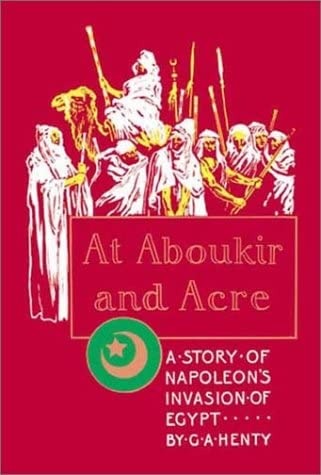
1. The Introduction
Hello, Dear Neighbors, and welcome back to Malmaison Media Salon. So, as I’ve said before, today we’re going to talk about a book by G. A. Henty, one of my archenemies!
Why archenemy?
That’s just how I label authors whose shit I reviewed before. Henty’s “wonderful” book about Frev left a bad taste in my mouth for a long time, so I was understandably mistrustful of any other piece of his.
However, after finding out he has one more Frev book AND several Napoleonic ones and this one (About the Egyptian Campaign, between the two eras), I had to make another review in spite of my lower than six feet expectations. So I went on Project Gutenberg to download the ebook for free. That’s where you can get it by the way.
But hey, maybe this book is better than the one I reviewed before. It’s always a possibility, right? The short answer is no. The long answer is not at all.
For an even longer answer, let us finally proceed with the review, which I dedicate to @koda-friedrich , @blackwidowmarshal123 and @aminoscribbles .
2. The Summary
As you might guess from the title, the book is set during the Egyptian campaign and, in classic Henty fashion, has a young English boy as the protagonist.
Edgar Blagrove, the boy in question, is a son of an English merchant who is left behind in Egypt during the war, so the book follows his adventures as he’s trying to survive, reunite with his family and have adventures along the way (as you do).
Even though Henty’s books are targeted at young boys, the premise sounds like something that I would actually enjoy, but I didn’t.
Let’s dissect this book to find out just how bad it gets, shall we?
3. The Story
The beginning isn’t so great. At first the opening scene promises some action, yet the immersion is broken like glass a couple of pages in with heaps upon heaps of Edgar’s backstory. Nice job, Henty…
Luckily, it’s the only time an extensive flashback like this is used, but the pacing can get about as fast as snail because often pieces of information get repeated in dialogues when nothing bad would’ve happened if the author avoided said repetition.
Moreover, while in the first half or so of the story the hero’s ways of getting out of problems stay realistic and justifiable, the second half has Edgar cross so far into Mary Sue territory that he may as well be called Gary Stu.
(Spoilers ahead)
This kid gets hired by SIDNEY FUCKING SMITH as a midshipman and interpreter. I’m not kidding, that’s an actual plot point!
Let me repeat: A kid who DID NOT previously serve in the navy is made midshipman and interpreter by SIDNEY SMITH, who meets said kid by pure coincidence! And only the interpreter part is justified, since Edgar was educated in several languages from a young age and learned the mother tongues of servants and citizens of Cairo too.
That, in all honesty, was the point where I just lost what little investment I had because it just became too apparent that everything will be fine and Edgar will have a happy ending.
4. The Characters
Before crossing the Gary Stu threshold, Edgar actually had potential to be a good character.
He is a reckless kid who was so bored with his monotonous life in Cairo that he wanted to see the English kick the French in the ass.
He cares about his friends, is kind and ready to help his loved ones and sometimes makes risky decisions.
But then he just becomes somebody who is always right and he gets too perfect. So all the potential goes down the drain like a dead goldfish. Hooray…
Sidi, an Arab boy Edgar rescues in the beginning of the story, is a bit more interesting, mainly due to his dynamic with Edgar as basically adopted brothers. He and his family provide Edgar with shelter in their oasis and help him out in a time of need too. Unfortunately, Sidi is a bit of a flat character for someone who gets a pretty major role in the story, but Henty isn’t too good with characters anyway.
Other characters are flat too. To various degrees. Unfortunately, that’s all I can say because there’s a ton of characters.
However, English officers like Nelson and Sidney Smith are whitewashed and glorified to no end. Henty loves sucking the dick of English nationalism, but I already saw that in my other review so no surprise there.
As for the French side of things… I was genuinely surprised that Napoleon was NOT portrayed as Devil Incarnate and it’s mentioned that he does care about his troops.
Many historical figures are name dropped but don’t appear in person, such as Kleber, Desaix, Junot, Menou, etc. Personally, I’m glad they don’t get a cameo in person for several reasons:
A) the book isn’t about them
B) it would be too unrealistic for Edgar to meet those people
C) after the atrocious portrayal of Montagnards, I DO NOT trust Henty with accuracy when it comes to French Republican generals
Eugene de Beauharnais is omitted once again, even though I’m pretty sure he participated in that campaign. Oh well, shout-out to Eugene from me!
5. The Setting
Henty is, once again, bad with settings and his descriptions are, at times, too minimalistic.
I didn’t feel the action in battle scenes, I couldn’t envision the oasis, the streets of Cairo or any other settings. There’s just not enough to achieve immersion.
6. The Writing
The writing is old fashioned, as it was a book written in the 19th century, but for people who are fluent in English there shouldn’t be a lot of issues with comprehending the vocabulary, except maybe all the naval terms that have no definitions given. Grrr…
I can’t necessarily call Henty’s writing awful, but it’s not for me so it didn’t help my overall impression of the book.
7. The Conclusion
Even though it’s not as bad as “In the Reign of Terror” was, it’s still not a book I would recommend and the improvements are insignificant.
Most characters are still flat, the annoying nationalism has still reared its head, the pacing is longer than the Amazon River and the protagonist becomes a Gary Stu in the end.
The verdict? Please find something else to read.
Anyway, the soirée is officially coming to an end. Please stay tuned because more updates are coming soon.
Love,
Citizen Green Pixel
#malmaison media salon#history#historical art#french history#napoleonic literature#napoleonic media#napoleonic art#g a henty#at aboukir and acre#book review#napoleon bonaparte#louis charles antoine desaix#jean baptiste kleber#general menou#eugène de beauharnais#sidney smith#horatio nelson#jean andoche junot
40 notes
·
View notes
Text
Currently reading a biography of Juliette Récamier, and @josefavomjaaga Eugène made his appearance and stole a ring from her.
Masséna sneaked away with a ribbon by the way.
14 notes
·
View notes
Text

Eugène🌟
12 notes
·
View notes
Text
Eugene de Beauharnais: Devdas character, Paro (comparison in character portraiture)
Y’all, I was supposed to use Napoleon II. I don’t know how Eugène ended up here.
Here is a perfect presentation of the Viceroy of Italy, posing as one of Bollywood’s most adored character, Paro in Devdas.
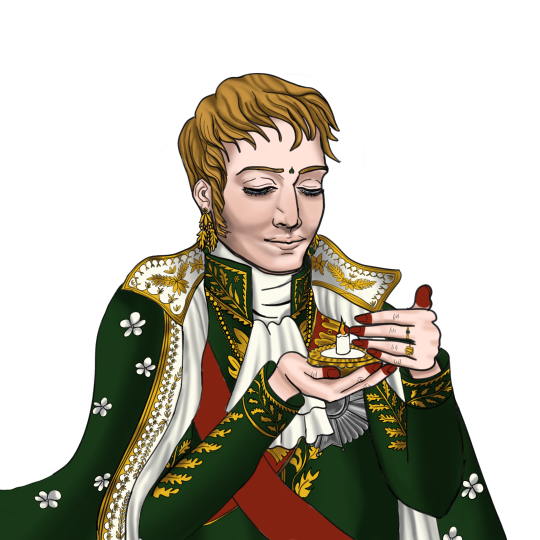
The work put into incorporating Napoleonic Empire style mens court attire into Devdas’ fancy costumes establishes an interesting concept once the reason is explained. Although, you may not quite expect Eugene de Beauharnais to fit into a sari, he has certain adornments, that help the viewer detail out the distinguished features indicating the Indian movie references.
The idea shown here is the story of Paro is that she is holding her diya, an Indian oil lamp with the light claiming her connection through her love for Devdas, her childhood friend. In Eugene’s life, his destiny had some ups and downs, throughout the his little-known childhood, French Revolution, the introduction of his new step-father Napoleon, and the rise and fall of his empire, through how it affected others. He remains hopeful throughout his life. To connect my perspective, he has brought me to combine these two explained individual’s lives into an effective image. While Paro chooses to keep Devdas to her heart, the flame, Eugene holds his candlelight to express his inner hope, being that same positioned flame. This becomes a more plausible idea for a powerful art piece.
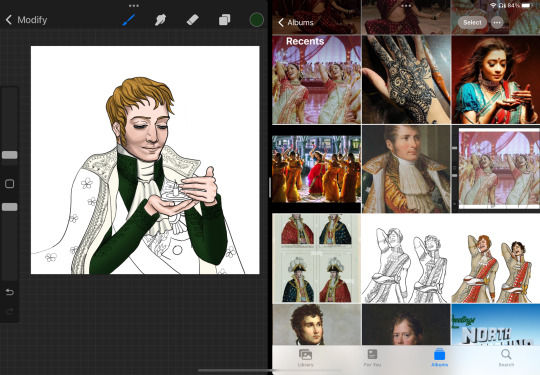
#napoleon#napoleonic#historical art#eugène de beauharnais#devdas#shah rukh khan#aishwariya rai bachchan#bollywood hits#movie songs#artist on tumblr#artwork
17 notes
·
View notes
Text


Eugène de Beauharnais to his wife Auguste of Bavaria on occasion of their eight wedding anniversary:
14 January, 1814
I only need to think of this day, my dear Auguste, to know that Providence protects my life. What happiness, what charms I owe to this 14 January which united my destiny to that of the most beautiful, of the best, of the most virtuous of women. It’s to spare your modesty that I avoid repeating this truth to you; because everyday I feel it and I would like to be able to love you even more, to love you as much as you deserve it. Goodbye, my good friend, may we both live to celebrate fifty years of marriage. And may Heaven above all be good enough not to call one of us without the other!
Auguste's reply to Eugène:
15 January, 1814
Isn’t my fortune enviable? I am the happiness of the one I would sacrifice my life for…; all my illusion is focused on belonging to the best of men; if it were possible, I would love him even more. And because God has been this far so good to us, I hope that he will call us to him together; even so, I pray to him daily to not let me live for more time than you.
ON THIS DAY, IN 1806, EUGÈNE DE BEAUHARNAIS, VICEROY OF ITALY, MARRIED PRINCESS AUGUSTE OF BAVARIA IN A RELIGIOUS CEREMONY. They'd had a civil wedding the day before. Eugène was the son of Empress Josephine and her first husband Alexandre de Beauharnais. Auguste was the eldest daughter of King Maximilian I of Bavaria and his first wife Princess Auguste Wilhelmine of Hesse-Darmstadt. Bavaria had only been recently elevated to the rank of kingdom thanks to Napoleon, and Auguste's hand in marriage for his step-son (whom he adopted the day of the civil ceremony) had been one of his conditions.
Although originally a political union, the marriage turned out to be a happy one. Eugène and Auguste had seven children, among them Queen Josephine of Sweden and Empress Amelie of Brazil.
#screaming crying etc etc#also I translated eugène's letter! it was my first attempt at translating french and honestly I gave up with some sentences#and used an automatic translator instead so it's like 70% my tl and 30% deepl and google lol#auguste's letter is a TRIPLE translation since I translated it from spanish#which in turn was a german translation of auguste's letter originally written in french. so sorry if it sounds a bit weird#eugène de beauharnais duke of leuchtenberg#auguste of bavaria duchess of leuchtenberg#on this day in history
62 notes
·
View notes
Text
For some, the afterlife was a continuation of their days on earth, a series of adventure tales or of cozy family life, a romantic comedy or a bloody crime story. For some, it was dark and gloomy, an existence torn apart, caught up forever in issues unresolved, an eternity of suffering, of darkness or of fear.
But for all, it was something. Joy or torment, longing, loving, pain, contentment, boredom. Night, day, dawn, sunset, twilight.
For him … it was not.
The one thing closest to an emotion the boy felt was confusion. He knew he had been swallowed up by … something. Something big. Maybe a whale. Or maybe a whale was merely the closest annotation he could come up with.
He did not know where he was now, or what it was that he was in. Maybe the whale’s stomach, where he now would be digested into oblivion. Neither could he tell if he was standing or lying, walking or floating. Surrounded by shadows, whispers, the faint memory of feelings and actions, he felt unable to get a hold on anything, to grasp anything, not a thing, not an image. Not a single thing presented itself to support him, be it in body or in mind.
He remembered that this was not right, that there should have been something. He knew there had been once, and there almost was, even now and even here, a memory of it, like the shadow of a thing that had once towered over him, the echo of a child’s laugh and a piano played, the feeling of a glance cast upon him, loving, despising, judgemental, a rose’s smell, the weight of a timber beam on a child’s shoulder, the flicker of light on a uniform once worn.
Oftentimes he believed to see others in the swirling grey shadows dancing around him, those others that were all that mattered. Yet whenever he turned to face them, they were gone, dissipated into wisps of smoke, had been nothing but an illusion, a trick of the eye, a forgotten image left in a broken mirror that would never show one thing: the boy himself.
Even the ground beneath his feet seemed to dissolve into mist.
Through the distant sounds, echoing in from a time shattered to pieces, and the confusing memories of a life filled to the brim, yet still unlived, he just barely could hear words spoken in a bariton voice once unduly praised, a voice that had once belonged to him.
"I should have loved to be a sailor."
#random musings#all those “afterlife” rps made me wonder what eugène's might look like#seeing as these afterlives seem to be shaped by people's or historiography's perceptions#writing#eugène de beauharnais
10 notes
·
View notes
Text
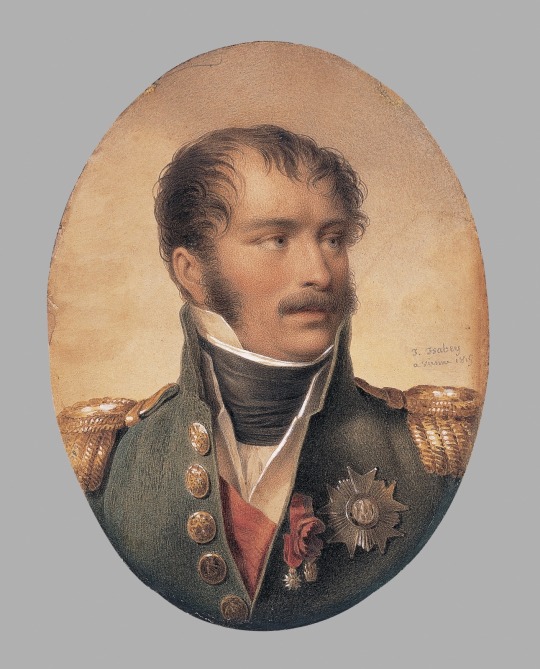
Eugène de Beauharnais, circa 1815
Jean-Baptiste Isabey (French, 1767-1855)
Vienna/Austria
Source: Cincinnati Art Museum
#Eugène de Beauharnais#beauharnais#napoleonic era#empire style#empire#19th century#first french empire#french empire#premier empire#Vienna#Austria#austrian empire#art#miniature#portrait#French#France#napoleonic#1800s#neoclassical#neoclassical art#military uniform#uniform#military#men’s fashion#history#1815#1810s
63 notes
·
View notes
Text

Miniature of Eugène de Beauharnais, by Daniel Saint.
45 notes
·
View notes
